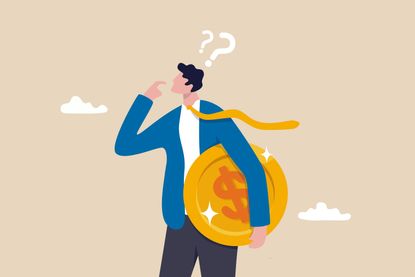Money Market Account Vs. High-Yield Savings Account
Here's what you need to know when deciding between a money market account vs. a high-yield savings account.
- (opens in new tab)
- (opens in new tab)
- (opens in new tab)
- Newsletter sign up Newsletter


With so many savings options out there, deciding where to store your cash can be challenging. Both money market accounts and high-yield savings accounts can help you build your savings, but deciding between the two can be tricky as they don’t have many drastic differences.
Because of this, it’s important to research which account is better suited for you and your financial needs, and you can start doing so by comparing the below features of each account.
Money Access
Many money market accounts allow check-writing privileges and allow you to access your cash with a debit card, which makes accessing your funds easier than with a high-yield savings account. To spend the money in a high-yield savings account, you’ll often have to connect the account to an existing checking account and then transfer funds from one account to the other, making it a bit more difficult to get to your cash.

Sign up for Kiplinger’s Free E-Newsletters
Profit and prosper with the best of expert advice on investing, taxes, retirement, personal finance and more - straight to your e-mail.
Profit and prosper with the best of expert advice - straight to your e-mail.
For this reason, if an emergency arises and you need quick access to your savings, a money market account has an advantage over a high-yield savings account.
Safety
When it comes to protecting your cash, both money market accounts and high-yield savings accounts are solid choices. This is because many of these accounts, regardless of the type, are FDIC insured. So, if your bank goes under, you won’t have to worry about losing your hard-earned cash. FDIC insurance protects up to $250,000 in individual deposit accounts and up to $250,000 for each person’s share of joint accounts.
Interest Rates
Both money market accounts and high-yield savings accounts offer higher rates when compared to traditional savings or checking accounts. However, high-yield savings accounts sometimes beat out money market accounts when it comes to high APYs, so it’s important to compare rates before opting for one account.
Below, you can compare current rates among high-yield savings accounts.
Minimum Balance and Deposit Requirements
While money market accounts offer easier access to your cash, they often have higher minimum balance requirements when compared to high-yield savings accounts. Because of this, they typically carry more fees as well, as you'll be more likely to fall below your account minimum.
On the other hand, most high-yield savings accounts have little or no minimum balance and deposit requirements, making them accessible to more people, even those with low savings balances.
Which is Best?
Overall, there aren’t extreme differences between a money market account and a high-yield savings account, and both have their pros and cons. So, when should you choose a money market account over a high-yield savings account?
Typically, money market accounts are better suited for people with larger amounts of money they’re looking to save, as they’ll be able to meet any minimum balance requirements and therefore avoid fees. On the other hand, individuals who are just beginning to save and don’t have large amounts of cash to put in an account should opt for a high-yield savings account.
Additionally, because cash is more accessible in a money market account, it’s a good choice for individuals who plan on spending from their account fairly often.
Related Content

Erin pairs personal experience with research and is passionate about sharing personal finance advice with others. Previously, she was a freelancer focusing on the credit card side of finance, but has branched out since then to cover other aspects of personal finance. Erin is well-versed in traditional media with reporting, interviewing and research, as well as using graphic design and video and audio storytelling to share with her readers.
-
-
 Deeper Regional Banking Crisis Unlikely after Triple Failure: Kiplinger Economic Forecasts
Deeper Regional Banking Crisis Unlikely after Triple Failure: Kiplinger Economic ForecastsEconomic Forecasts Deeper Regional Banking Crisis Unlikely after Triple Failure: Kiplinger Economic Forecasts
By Rodrigo Sermeño • Published
-
 Spending Cuts Could Trigger Deeper Slowdown: Kiplinger Economic Forecasts
Spending Cuts Could Trigger Deeper Slowdown: Kiplinger Economic ForecastsEconomic Forecasts Spending Cuts Could Trigger Deeper Slowdown: Kiplinger Economic Forecasts
By David Payne • Published

